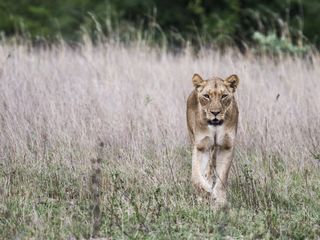First Camera Crash Course Lesson 5: How to focus and stay sharp
When using a wide aperture (such as f/3.5), and therefore capturing a shallow depth of field, your depth of focus is also reduced. This means only a small plane in your frame will be sharp; anything in front of and behind your point of focus will blurred.
With this in mind, you need to be extra vigilant with focusing when using a wide aperture as, if you're off target, you'll end up with out-of-focus subjects.
A good example is when shooting motorsports; be careful to focus on the front end of the vehicle (or the rider) as that's what you want in focus to draw people in.
If your focusing isn't accurate, you can end up with a shot where the back of the vehicle is sharp, but the front of the car or head of the rider is out of focus.
Focusing on your subject

- Use a high ISO to increase the shutter speed and to ensure a sharp result
- Use Continuous AF (or AI Servo AF on Canon cameras) to help you track and focus on fast-moving targets
- Using the AF points in the top corners can help your compositions, by placing subjects in your frame according to the 'rule of thirds'

First Camera Crash Course Lesson 6: Choosing your AF points
Your new camera is likely to be set-up with Auto AF Point Selection on as default. This is fine if you want to focus on whatever's closest to you in your frame, but it becomes a problem when you want to take control and focus on something deeper in the scene for a more creative result. Switch to Manual AF Selection and choose your own AF points.

- The wide aperture of f/2.8 means the background is less distracting, but still adds depth and context to this photograph
- Selecting a single AF point makes it easier to frame a shot so that it obeys the 'rule of thirds' to ensure a great composition
- By manually selecting your AF point, you can choose where in your frame you focus

Get daily insight, inspiration and deals in your inbox
Get the hottest deals available in your inbox plus news, reviews, opinion, analysis and more from the TechRadar team.
Current page: Focusing and choosing your AF points
Prev Page Shutter speed Next Page Avoid the common composition mistakesPhil Hall is an experienced writer and editor having worked on some of the largest photography magazines in the UK, and now edit the photography channel of TechRadar, the UK's biggest tech website and one of the largest in the world. He has also worked on numerous commercial projects, including working with manufacturers like Nikon and Fujifilm on bespoke printed and online camera guides, as well as writing technique blogs and copy for the John Lewis Technology guide.

